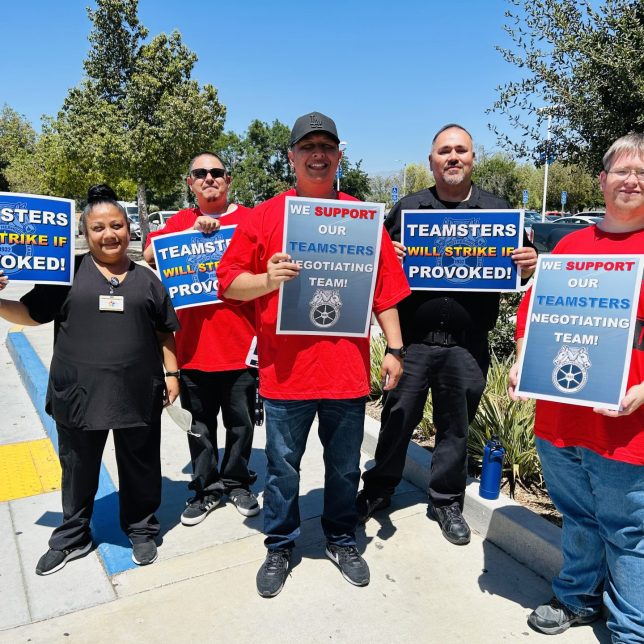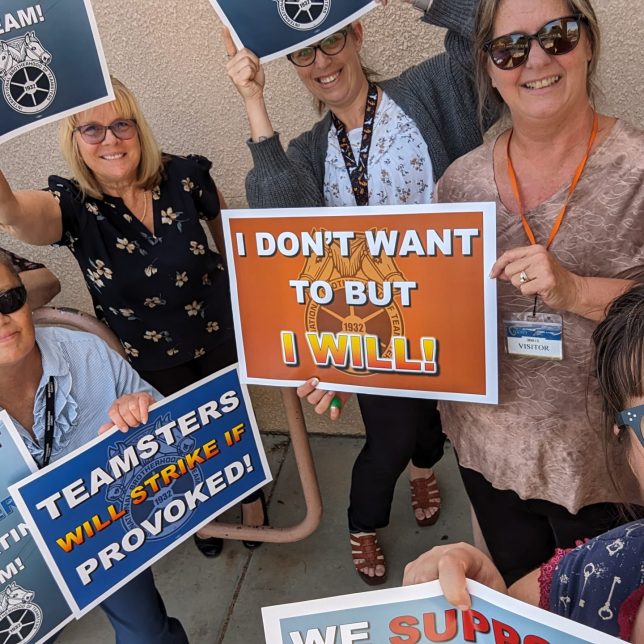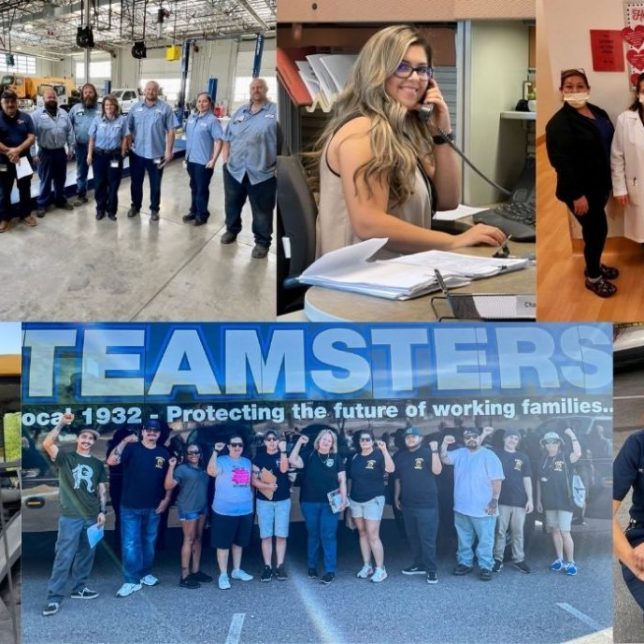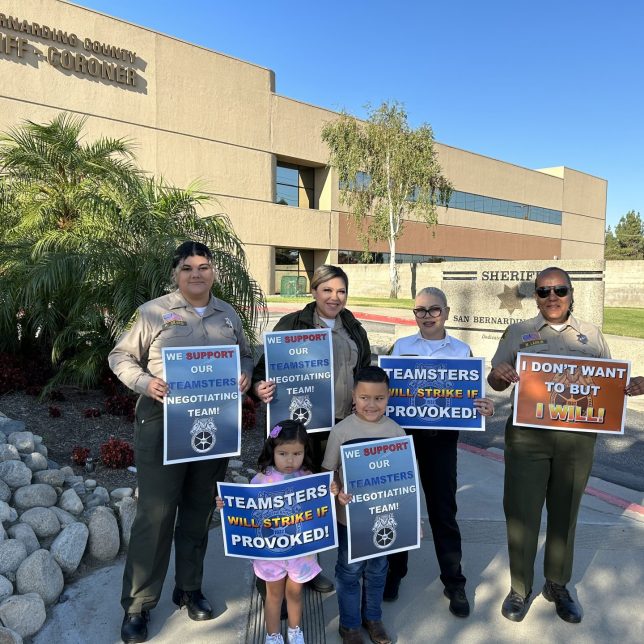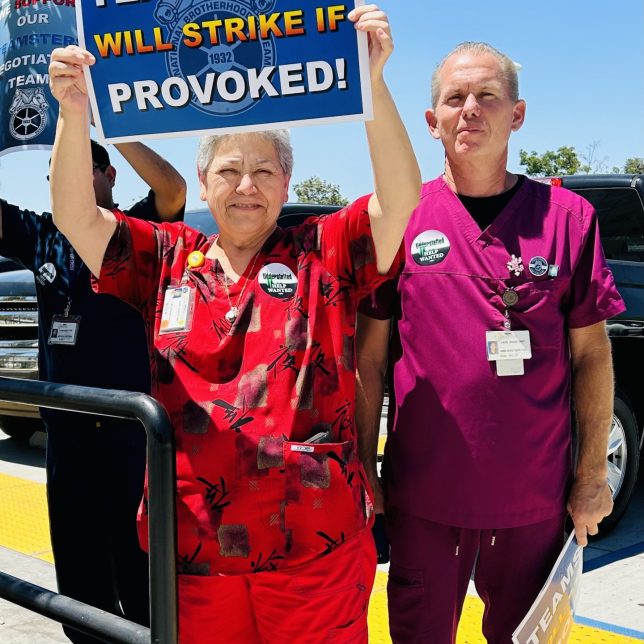Local 1932 Champions State Public Subsidy Transparency Bill (AB 2853)
The explosive growth of online commerce in recent years has fueled development of warehouses and distribution centers. The new distribution centers, which can span millions of square feet, have driven developers to look to areas of the state with open space, cheap land, and low wages.
As a result, areas of the state that have suffered from high unemployment and poverty rates, such as the Central Valley and Inland Empire, have seen a boom in warehouse development. The mere promise of jobs and tax revenues is enough for cities to offer massive public subsidies to attract a distribution center. Cities compete fiercely with each other offering more generous subsidies and incentives to land a distribution center within their borders. Teamsters Local 1932 is working in collaboration with local labor and communities allies in support of Assemblymember Jose Medina’s AB 2853, which will increase public transparency prior to the approval of a subsidy.
The Inland Empire is a prime example of the explosive growth of distribution centers. From 2010 through 2016, 13 mega warehouses containing 1 million feet or more were built in the Inland Empire and an estimated 43% of all imported consumer goods move through the region. A quarter of the jobs created in the region over the past five years are in the logistics industry. Landing a distribution center doesn’t come cheap. Cities dole out tax breaks, subsidies and investments in roads and infrastructure all to lure the logistics industry.
For example, to attract the QVC Warehouse, Ontario pledged the company could keep 55% of their sales taxes, at a loss of $2.75 million annually to the city. The city offered this, and other generous incentives, on top of the state of California awarding QVC $1.4 million in tax breaks to locate in Ontario as well.
Moreno Valley, close to Ontario in the Inland Empire, is an example of the impact of the competition between cities for distribution centers. The city was promised that a Skechers warehouse would bring thousands of jobs to the city when it opened in 2010. Instead, Skechers closed five of its warehouses that employed 1200 workers in nearby Ontario and transferred workers to the new site. They also began to automate many tasks, resulting in a net loss of 400 jobs in the region.
Even when companies do create jobs, the quality raises questions of the value of those jobs relative to public subsidies. A 2015 report by UC Riverside found that warehouse jobs pay less than a living wage, are often temporary, and do not provide health-care benefits. Interviews with workers paint an even bleaker picture. Workers report that warehouse jobs are grueling and dangerous contributing to high turnover. Injuries from accidents, repetitive motions and heat stroke are common. Many jobs are seasonal or temporary so workers have no reliable schedule or secure income and no chance for advancement.
Massive distribution centers may also exert downward pressure on other employers in the area. The Economist reported that workers in areas where Amazon operates earn 10% less than workers in similar jobs. Another study found that 1 in 10 Amazon workers in Ohio was on food stamps to supplement their meager wages. Despite the reports and studies that show that the jobs created by distribution centers do not necessarily improve the lives of residents nor boost the economy, cities still compete to attract them.
Despite the profitability of global companies like Amazon, QVC or Walmart, cities have little leverage to negotiate with such companies for better terms, such as guarantees of full-time jobs with living wages and benefits.
When cities engage in a race to the bottom giving away taxpayer funds in exchange for low-wage, temp jobs that do nothing to grow the economy or reduce inequality, the state of California loses as well. The collective race to the bottom is bad for all Californians. Communities need tools to know what they are getting for their money and the ability to hold developers and employers accountable for the quality and number of jobs they promise to create.
AB 2853 requires companies that receive local subsidies to report on the number of jobs they will create, as well as the on wages, benefits, the use of temporary agencies, training programs and other measures of job quality to the public before the subsidy is approved. Current law requires disclosure of the amount of the subsidy along with the estimated tax impact on the local government.
The bill also requires the company to file an annual report to their approving city or county that reports on their progress to fulfilling their promise of quality job creation, along with the retention rate of workers at the company. The report also includes the number of disadvantaged workers hired, including veterans, formerly incarcerated individuals and people on public benefits.
This basic level of transparency on job creation, job quality, and tax revenue gives local governments the tools they need to make decisions about giving public funds to attract companies to locate or expand in their jurisdiction.
Local governments that give subsidies to companies as an economic development tool need to know what the actual return on their investment is in order to change course or to make better decisions in the future. This bill is a first step to give local government the tools to make smart economic development choices that benefit their residents and economy, and the state.

